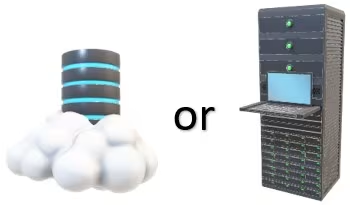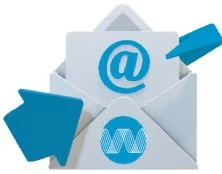by Ashley Carter
Share
You’ve decided that your laboratory needs a LIMS. That’s a great start! Now, you just have the task of choosing a LIMS provider that works best for your laboratory. There are a lot of options out there, and they all seem to feel like they’re the best one since sliced bread. No one wants to spend weeks pursuing a path only to find out that at the heart of the solution, it’s not going to work for your laboratory. So how do you decide which providers to pursue for your laboratory?
This article will cover the most common points to consider when choosing a LIMS provider, and, hopefully, help you focus your research efforts in the right direction.
- Who will host the LIMS?
- How many people will need access?
- Will I need to capture different data in the future? (Scalability)
- What features do I need?
- Do I have any special lab processes?
- Do I need to send emails from LIMS?
- What kind of time commitment is required for implementation?
- What is the primary industry the LIMS provider serves?
- What is the LIMS provider’s reputation?
- What support does the LIMS provider offer?
1. Who will host the LIMS?
Who and how the LIMS gets hosted is important to deter-mine at the beginning of your LIMS search. Some laboratories require that all of their data must be maintained within their company. Some take this approach because it’s un-clear what a cloud hosted LIMS might offer. If a lab is interested in hosting, find out what security requirements your company has in place and make sure your proposed LIMS provider meets those requirements.


2. How many people will need access?
LIMS providers provide access to their system in different ways. Some provide accounts in buckets of 5 or 10, others allow purchase of individual accounts but require a license for every account. Some provide annual subscriptions of the licenses purchased, other allow the laboratory to own the license once purchased. How the LIMS provider handles the users of their LIMS is important to understand and will likely affect how a laboratory utilizes the LIMS, and is almost guaranteed to affect the cost of the LIMS solution.
3. Will I need to capture different data in the future? (aka Scalability)
A laboratory’s customer seems to always be changing what they require of the laboratory. Engineers want to track new pieces of information, or a new accreditation requires additional review steps. Whatever the method, a laboratory needs to consider how often that happens, and how they want to handle it. Some LIMS providers offer a more “Off the Shelf” solution but to make any changes requires telling them what changes need to be made so they can do it for you. However, some LIMS providers have very customizable solutions, but do they require coding knowledge to make those changes? Perhaps you need to look for a happy medium, a solution that is customizable, but with a user-friendly, no-coding-needed interface to make those changes?
4. What features do I need?
This is a big question that is sometimes difficult to answer, but it is important to understand what your laboratory needs to facilitate the day-to-day processes. Sometimes it helps to walk through the workflow and distill it into each step, then use that to guide the discussion with the LIMS providers to determine if they can provide the features described. Some LIMS providers also have checklists or feature lists on their website or can provide them upon request to help you understand their offering.
A basic feature of any LIMS is to capture results of testing, but what can you do with the results after they are entered? Reporting is a logical next step. Do you need a system that exports the results into another program for reporting purposes, or do you want to take out the middle-man and create reports directly from LIMS? If the latter, will the LIMS allow integration of information throughout the system in order to create the report you need?
Check out Wavefront’s LIMS Requirements Checklist for more guidance on identifying what features you may need for your new LIMS.
5. Do I have any special lab processes?
This question is one to ask after the one above. Is there anything that is part of your laboratory’s workflow that doesn’t really fit a typical LIMS category? If not, it may be a customization and could affect implementation cost and time. It is worth investigating what that means for your laboratory and if it is a “need” or a “maybe later” kind of feature. Additionally, remember to think about what that means for the configurability for your customized feature in the future. Realizing that some features are more complex than others, but, when possible, does the LIMS Provider work with you to develop a solution that you can maintain in the future, or will you have to go back to them for every change?

6. Do I need to send emails from LIMS?
Sometimes sending automated emails is a “nice-to-have”, but in the world we live in with immediate communications and automated processes, asking if this becomes a requirement is worth the question. Sending reports to customers, both internal and external, notification to the lab management when tests fail, and so many more options can truly improve the workflow of any lab. Do the LIMS providers offer this? Will the method they use to set this up work with your laboratory’s security requirements?
7. What kind of time commitment is required for implementation?
There are multiple angles to consider when choosing a LIMS provider, and many of the above questions play into each other, this one even more so. Some LIMS providers have taken a more “out-of-the-box” approach, offering little flexibility or configurability, but instead providing a product that takes less time to set up. However, other LIMS providers cater more toward the laboratories that are unique in their work flow and need a system that fits them instead of trying to change their work flow to fit the system. This path may take a few months to set up. Accounting for this time is important so that you know what to expect.
8. What is the primary industry the LIMS Provider serves?
Every LIMS provider has a core industry that they consider their “bread and butter”. Their system was essentially developed with this industry mind. While that does not preclude success of their product in other industries, it is definitely something to consider when choosing the LIMS provider. The biggest difference is between materials testing and healthcare testing. While there is significant crossover between them, these two industries are very different and worth investigating a LIMS provider that has expertise in the one that aligns closest to your laboratory. A LIMS provider that tries to be the solution to all industries may not truly have the expertise or knowledge in any one industry.
9. What is the LIMS provider’s reputation?
A LIMS purchase is a long-term commitment with that LIMS provider, so it is important to be confident that they will not go bankrupt a year after you join their team. Some helpful questions to determine this are:
- How long have they been around? Are they an established company or a startup?
- Do they have a significant customer base to show that they can not only win customers, but keep them?
- Can they provide references from their existing customers that have been using LIMS for a few years?
10. What support does the LIMS provider offer?
Any system that supports such a vital part of any company that the laboratory is, must provide support. Therefore, it’s important to understand what that support entails before making a decision about what LIMS provider to choose. Will the provider be available if the LIMS goes down in the middle of the night? Are they responsive to questions and requests?

Choosing a LIMS provider is an important decision for your laboratory. The above points are meant to help you in your journey in making that important decision. However, Wavefront is always available to help work through your laboratory’s needs. Making sure the LIMS provider and the laboratory is a good fit is important for all involved. Click on the Schedule a Demo button above to talk to a knowledgeable Wavefront employee.
STAY IN THE LOOP
Subscribe to our Free Content
Learning about LIMS is a monthly article series where Wavefront shares questions that have come up throughout our interactions with a range of individuals and customers. We do our best to provide information about each topic to help people learn more about LIMS.
Sign up here to be added to our mailing list and receive these articles directly in your inbox.
In today's rapidly evolving laboratory environment, effective data management has become increasingly crucial for maintaining operational excellence and competitive advantage. Modern laboratories generate an unprecedented variety of data types, each requiring specific handling protocols and storage considerations. A robust Laboratory Information Management System (LIMS) serves as the cornerstone of efficient laboratory operations, providing comprehensive solutions for data complexity, regulatory compliance, and long-term data integrity while ensuring seamless workflow integration.
Laboratory staffing shortages have become a critical challenge across industries. Learn how LIMS features and automation helps laboratories maintain high standards and increase efficiency, even with reduced personnel. Wavefront LIMS provides comprehensive solutions for workflow automation, knowledge transfer, and staff development - enabling your laboratory to thrive despite staffing constraints.
In an era of increasing complexity and rising performance expectations, laboratories must do more with less. Discover how a Laboratory Information Management System (LIMS) can transform operational challenges into competitive advantages, turning your lab from a cost center into a strategic asset.
In an increasingly competitive and regulated laboratory environment, implementing a robust Sample Management Software solution is essential for driving operational excellence. A comprehensive Laboratory Information Management System (LIMS) streamlines sample tracking, enhances data integrity, facilitates compliance adherence, and unlocks powerful analytics for continuous improvement. Discover how to harness the transformative potential of LIMS to position your laboratory for long-term success.





